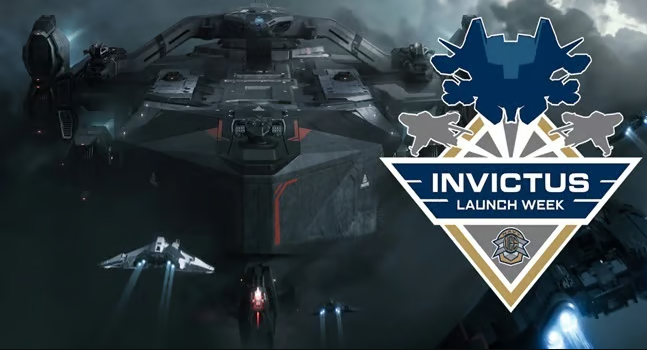Navigating the Verse: A Deep Dive into the Diverse World of Star Citizen Ships

In the ever-expanding universe of Star Citizen, ships serve as more than just vehicles—they are extensions of the players themselves. From agile solo fighters to massive capital-class command ships, Star Citizen ships form the core of gameplay, economy, and identity in the verse. With an unmatched level of detail and immersion, these ships provide a sandbox of endless possibilities for both new pilots and seasoned captains. This article explores the fascinating ecosystem of ships in Star Citizen, from classifications and customization to economy and community dynamics.
The Importance of Ships in Star Citizen
Ships are the foundation of everything in Star Citizen. They define how players interact with the world and what roles they can take on. Whether you're a bounty hunter, trader, explorer, or miner, the ship you choose will largely dictate your gameplay style. Each vessel is designed with precision, incorporating both aesthetic beauty and functional depth. More than assets, Star Citizen ships are immersive environments, often complete with detailed interiors like sleeping quarters, weapon lockers, and fully interactive cockpits.
In this universe, owning a ship isn’t just about getting from point A to point B—it’s about living in a mobile base of operations. This high level of fidelity makes each ship feel like a character of its own, complete with quirks, limitations, and a place in the lore of the game. The result is a fleet of ships that feel alive and meaningful to their owners, fostering emotional attachments rarely seen in other games.
Classifications of Star Citizen Ships
Understanding the various ship classifications is essential for anyone looking to engage with Star Citizen seriously. Ships are designed for specific roles, and each class offers unique advantages.
1. Starter Ships
Starter ships like the Aurora MR, Mustang Alpha, and Nomad are designed for new players. They provide the basic tools for combat, trade, and exploration but are limited in capacity. These ships are great introductions to the game’s mechanics, offering simplicity and affordability.
2. Combat Ships (Light, Medium, Heavy Fighters)
Fighters such as the Aegis Gladius, Anvil Arrow, and F7C Hornet are engineered for space combat. Light fighters focus on agility and speed, medium fighters balance durability and firepower, and heavy fighters like the Vanguard or Hurricane pack a serious punch at the cost of maneuverability.
3. Multi-Crew and Versatile Ships
Ships like the Drake Cutlass Black, Origin 400i, and Mercury Star Runner allow multiple players to operate various functions, from piloting to engineering. These ships are ideal for groups and organizations, offering balanced features that suit exploration, cargo, and mild combat scenarios.
4. Industrial and Utility Ships
For those interested in economic gameplay, ships like the MISC Prospector (mining), RAFIN Starfarer (refueling), and Reclaimer (salvage) enable non-combat roles. These ships form the backbone of Star Citizen’s developing economy.
5. Exploration and Science Vessels
Ships such as the Anvil Carrack, Origin 600i Explorer, and RSI Apollo cater to players who seek to explore deep space or provide support like healing and research. These ships offer long-range capabilities and advanced scanning or medical modules.
6. Capital-Class Ships
The pinnacle of ship ownership, capital ships like the Idris, Javelin, and future Bengal Carrier are monumental achievements. Requiring full crews to operate, they house multiple decks, hangars, and firepower rivaling entire fleets. These ships serve as mobile bases and status symbols for elite organizations.
Customization and Upgrades
Customization is a key part of making your Star Citizen ship your own. Almost every component of a ship can be upgraded: engines, shields, weapons, coolers, and quantum drives. Additionally, paint jobs and internal decorations give players the ability to personalize their ships visually.
This level of customization not only adds visual flair but also tactical depth. A stealth-focused player might outfit their ship with low-emission components and dark hull paint, while a combat-oriented pilot will prioritize stronger shields and high-damage weapon systems. The modularity ensures that even within a specific ship type, two pilots may operate in completely different ways.
Ship Ownership, Rentals, and the In-Game Economy
One of the most controversial and innovative aspects of Star Citizen is how ships are obtained. Players can purchase ships directly with real money or earn them in-game through contracts and missions. Most ships sold through the game’s website are designed to fund development, but every ship will eventually be obtainable with in-game currency.
Additionally, players can rent ships for a set time period, allowing them to test different roles before committing. This adds flexibility and lowers the entry barrier for newer players. As the in-game economy matures, ships will become central to crafting, transportation, and market interaction—making them not just tools, but full-fledged economic assets.
Capital Ships: Titans of the Star Citizen Universe
Among all Star Citizen ships, capital ships are the most ambitious and breathtaking. These behemoths are more than ships—they are floating cities with command bridges, engineering rooms, fighter hangars, and full crews. The Idris-P, Javelin, and Bengal are examples of capital-class ships that will define player-versus-player warfare and organizational dominance.
Owning or crewing a capital ship will be a full-time job. The complexity of operations—managing power systems, coordinating fighter squadrons, and defending against boarding parties—adds a level of strategy rarely seen in MMOs. Their eventual arrival into the persistent universe will likely change the political and gameplay landscape forever.
The Cultural Impact of Ships in the Community
Ships in Star Citizen aren’t just functional; they’re cultural icons. Entire guilds and player organizations base their identity around certain ships. For example, exploration groups may use the Carrack as their flagship, while pirate syndicates may favor the Caterpillar or Corsair for their rugged, modular designs.
Some ships are legendary among the community. The 890 Jump is synonymous with luxury and opulence. The Retaliator is a symbol of power and destruction. Ships often generate intense discussion on forums, YouTube, and Reddit, and it’s not uncommon for players to develop lore around their personal ships.
The Future of Star Citizen Ships
As Star Citizen evolves, so too will its ships. New ship classes are in constant development, and existing ships continue to receive reworks and balance adjustments. With the upcoming implementation of features like modular interiors, dynamic components, and ship-to-ship docking, the immersion will only deepen.
Furthermore, as mechanics like base building, farming, and more complex trade routes emerge, ships will continue to evolve to meet new player needs. We may see a day when ships support entire space stations, function as mobile hospitals, or act as long-term research platforms—further blurring the line between utility and roleplaying.
Conclusion: More Than Just Metal and Engines
Star Citizen ships are not just transportation—they are homes, weapons, tools, and stories. Each ship carries with it a purpose, a personality, and a promise. As the game grows closer to its full realization, the ships will remain its most iconic and defining feature.
- Art
- Causes
- Crafts
- Dance
- Drinks
- Film
- Fitness
- Food
- الألعاب
- Gardening
- Health
- الرئيسية
- Literature
- Music
- Networking
- أخرى
- Party
- Religion
- Shopping
- Sports
- Theater
- Wellness



